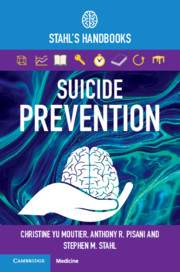Book contents
- Suicide Prevention
- Suicide Prevention
- Copyright page
- Contents
- Acknowledgements
- Section 1 Suicide Prevention Overview
- 1 Translating Science into Action
- 2 Dispelling Myths Surrounding Suicide
- 3 The Public Health Model of Suicide Prevention
- 4 Understanding Why: Drivers of Suicide Risk
- Section 2 Clinical Risk Assessment and Care
- Section 3 Special Topics: Medicolegal Considerations and Specific Populations
- Appendix Resource List
- Index
- References
4 - Understanding Why: Drivers of Suicide Risk
from Section 1 - Suicide Prevention Overview
Published online by Cambridge University Press: 15 May 2021
- Suicide Prevention
- Suicide Prevention
- Copyright page
- Contents
- Acknowledgements
- Section 1 Suicide Prevention Overview
- 1 Translating Science into Action
- 2 Dispelling Myths Surrounding Suicide
- 3 The Public Health Model of Suicide Prevention
- 4 Understanding Why: Drivers of Suicide Risk
- Section 2 Clinical Risk Assessment and Care
- Section 3 Special Topics: Medicolegal Considerations and Specific Populations
- Appendix Resource List
- Index
- References
Summary
As is the case for all complex health outcomes, there are many risk factors known to increase risk of suicide. In Chapter 6, we will address the clinical assessment of suicide risk, which incorporates risk and protective factors. In the current chapter, we will show how risk factors – health and environmental – weave together and escalate risk at particular moments in a person’s life. This chapter will explore how the interaction of biological, psychological, and social/environmental risk factors can increase risk of suicide, differentiating between more enduring and more dynamic factors. We will show how these various factors intersect with life stressors to increase suicide risk. Research related to the global burden of suicide indicates that while cultural factors and available lethal means play a huge role in the suicide risk of a population, many risk and protective factors are shared cross nationally, likely simply being human risk factors for suicide.
- Type
- Chapter
- Information
- Suicide PreventionStahl's Handbooks, pp. 43 - 72Publisher: Cambridge University PressPrint publication year: 2021



